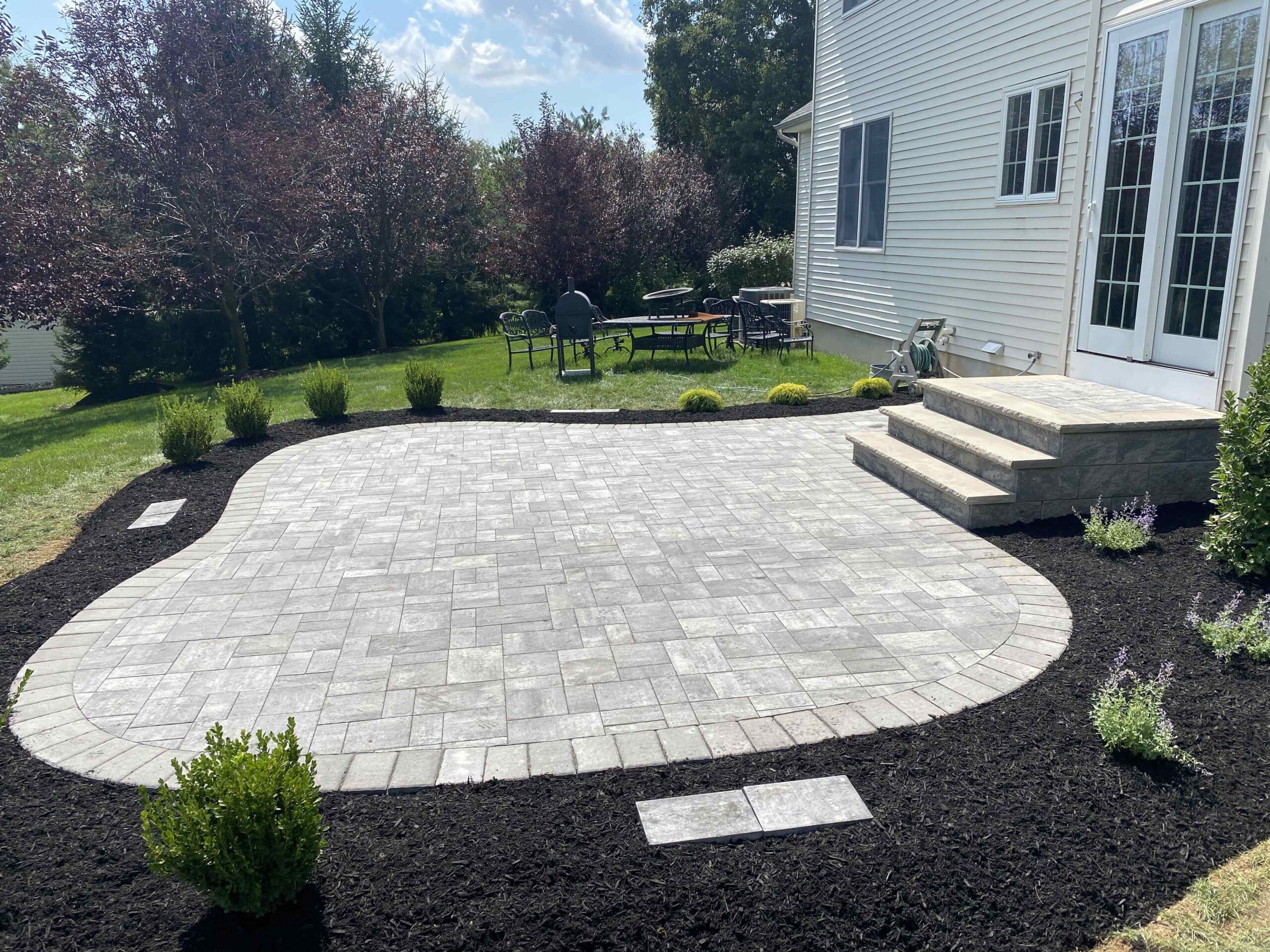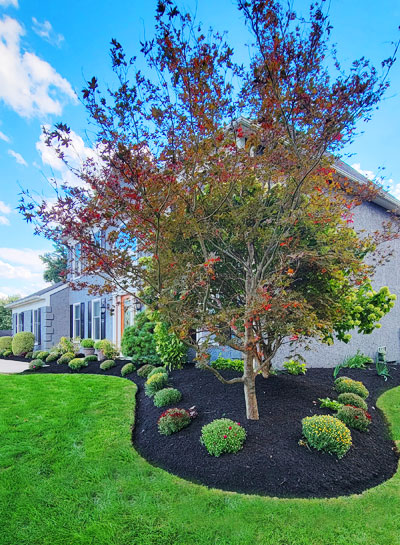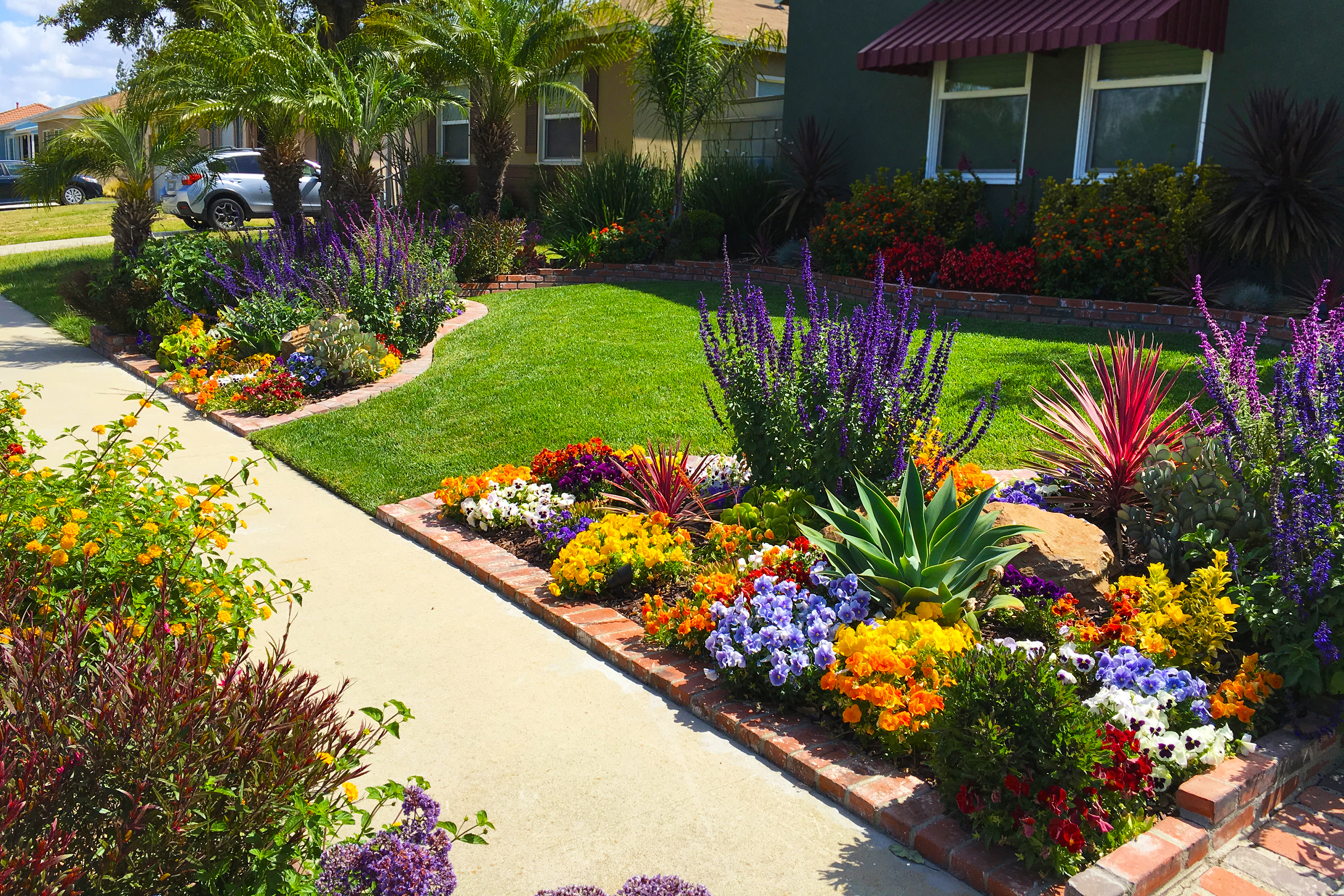Elevate Your Building's Aesthetic With Lasting Landscape Design Styles and Eco-Friendly Practices

Advantages of Sustainable Landscaping
Carrying out sustainable landscaping practices not just conserves natural deposits but also promotes biodiversity and boosts total ecological wellness. By selecting eco-friendly landscaping techniques, building proprietors can enjoy a wide variety of benefits that prolong beyond just visual allure. One considerable advantage is the decrease of water intake via the usage of drought-resistant plants, rain gardens, and reliable watering systems. This not only lowers energy costs however also contributes to water preservation initiatives in the neighborhood.
Furthermore, lasting landscaping can boost dirt health and wellness by reducing using chemical plant foods and chemicals, consequently creating a healthier setting for plant growth and useful dirt organisms. This, subsequently, improves the overall strength of the landscape to endure ecological stressors and environment change effects - bush removal Jacksonville. Furthermore, lasting landscaping practices can bring in varied wildlife, including pollinators like butterflies and bees, cultivating a much more balanced and lively community within the building
Incorporating Indigenous Plants
To build on the advantages of lasting landscape design, a critical emphasis on including indigenous plants can better enhance environmental durability and promote biodiversity within the landscape. Native plants are types that naturally occur in a certain location and have actually progressed to prosper in the neighborhood environment, soil problems, and environment. By consisting of native plants in landscaping layouts, homeowner can reduce water usage, decrease the demand for chemical pesticides and plant foods, and support the local wildlife populace.
Including indigenous plants likewise assists in preserving the unique personality and identity of a region's vegetation. These plants commonly require less maintenance as soon as established, making them a sustainable and affordable landscaping remedy in the future. Furthermore, indigenous plants can draw in native pollinators like bees and butterflies, adding to the overall wellness of the environment.
When choosing indigenous plants for landscaping projects, it is necessary to choose species that are fit to the particular ecological problems of the site. Consulting with botanical yards or local baby rooms can supply valuable advice on selecting the appropriate native plants for a certain area. By incorporating native plants right into landscaping layouts, property owners can develop lovely, sustainable exterior spaces that profit both the area and the environment.

Water Preservation Methods
Effective watering techniques play an important function in sustainable landscape design methods, making sure ideal water conservation efforts in outdoor rooms. Carrying out methods such as drip irrigation, rain harvesting, and wise watering systems can dramatically reduce water wastefulness while keeping a healthy and balanced landscape. Leak watering provides water directly to the this origins of plants, lessening evaporation and drainage. Rain harvesting entails gathering rainwater from roofs and saving it for later use in watering, minimizing the reliance on metropolitan water sources. Smart irrigation systems make use of weather condition information and dirt moisture degrees to adjust sprinkling schedules, avoiding overwatering and advertising water effectiveness.
In addition to sophisticated watering methods, xeriscaping is one more water-saving landscape design technique that concentrates on utilizing drought-resistant plants, compost, and efficient irrigation to develop a low-water landscape layout - landscaping contractor Jacksonville. By selecting indigenous plants that are appropriate to the neighborhood climate and soil conditions, homeowner can lower the need for excessive watering, inevitably saving water and advertising a sustainable outdoor atmosphere
Eco-Friendly Hardscaping Concepts
Enhancing outside rooms with environmentally friendly hardscaping attributes can add substantially to lasting landscape design techniques. Choose for products like redeemed timber, recycled concrete, or all-natural rock to decrease ecological effect when thinking about hardscaping components. These materials not just add a special visual attract your outdoor room yet additionally lower the demand for brand-new sources extraction.
Applying absorptive paving alternatives such as gravel or permeable concrete can help in reducing water overflow and promote groundwater recharge. These options enable rainwater to seep right into the ground, protecting against disintegration and minimizing the burden on stormwater systems.
Integrating indigenous plants into hardscaping layouts can additionally boost eco-friendliness by sustaining regional wild animals and minimizing the need for too much watering or chemical treatments. By incorporating upright gardens or eco-friendly walls, you can present extra plants into city settings, boosting air quality and biodiversity.
Including energy-efficient lighting, such as solar-powered LEDs, right into hardscaping styles can decrease power usage and reduced your building's carbon footprint. Focusing on environmentally friendly hardscaping ideas not just boosts the charm of your exterior space however also demonstrates a commitment to ecological stewardship.
Upkeep Tips for Sustainable Landscapes

On a regular basis trim plants to promote healthy growth and stop overgrowth that can lead to pest infestations or conditions. Usage natural fertilizers to nourish the soil and plants without dangerous chemicals that can leach right into the setting.
Verdict
In verdict, sustainable landscaping practices provide many advantages for homeowner, from improving the aesthetic charm of the surroundings to advertising environmental conservation. By incorporating indigenous plants, implementing water preservation strategies, and making use of environment-friendly hardscaping concepts, homeowner can develop attractive landscapes that are also eco liable. With correct upkeep, sustainable landscapes can add and grow to a much healthier ecological community for both people and wildlife.
Additionally, sustainable landscape design can enhance soil health by decreasing the usage of chemical fertilizers and pesticides, therefore developing a healthier environment for plant development and helpful soil organisms.To construct upon the advantages of sustainable landscape design, a critical focus on incorporating indigenous plants can even more enhance eco-friendly durability and promote biodiversity within the landscape. By consisting of click over here indigenous plants in this post landscaping designs, property proprietors can reduce water use, lessen the requirement for chemical pesticides and fertilizers, and sustain the local wild animals population.
These plants usually need much less maintenance as soon as established, making them a lasting and economical landscape design option in the long run. By integrating indigenous plants into landscape design designs, residential property owners can produce beautiful, lasting outside spaces that profit both the neighborhood and the setting.